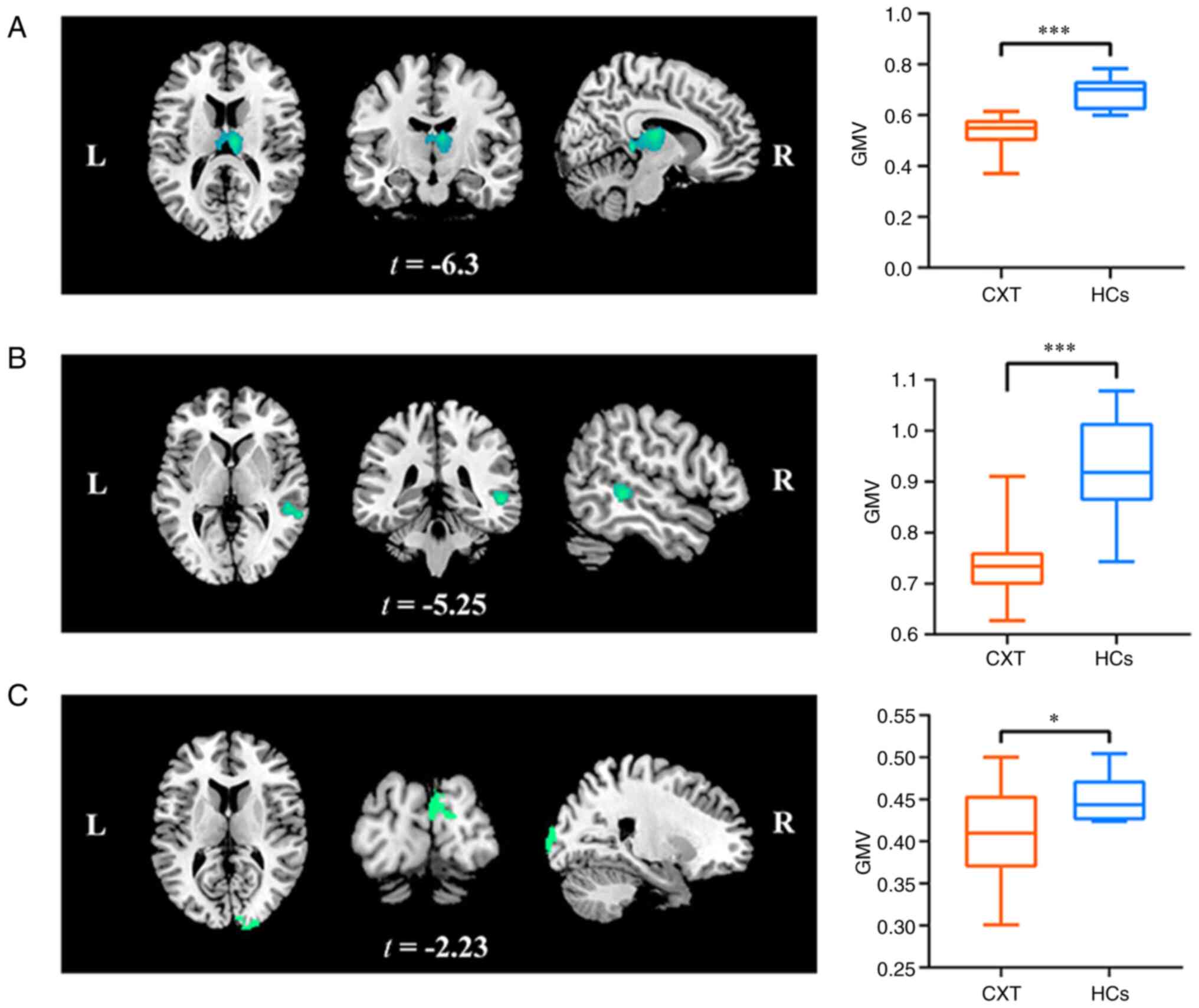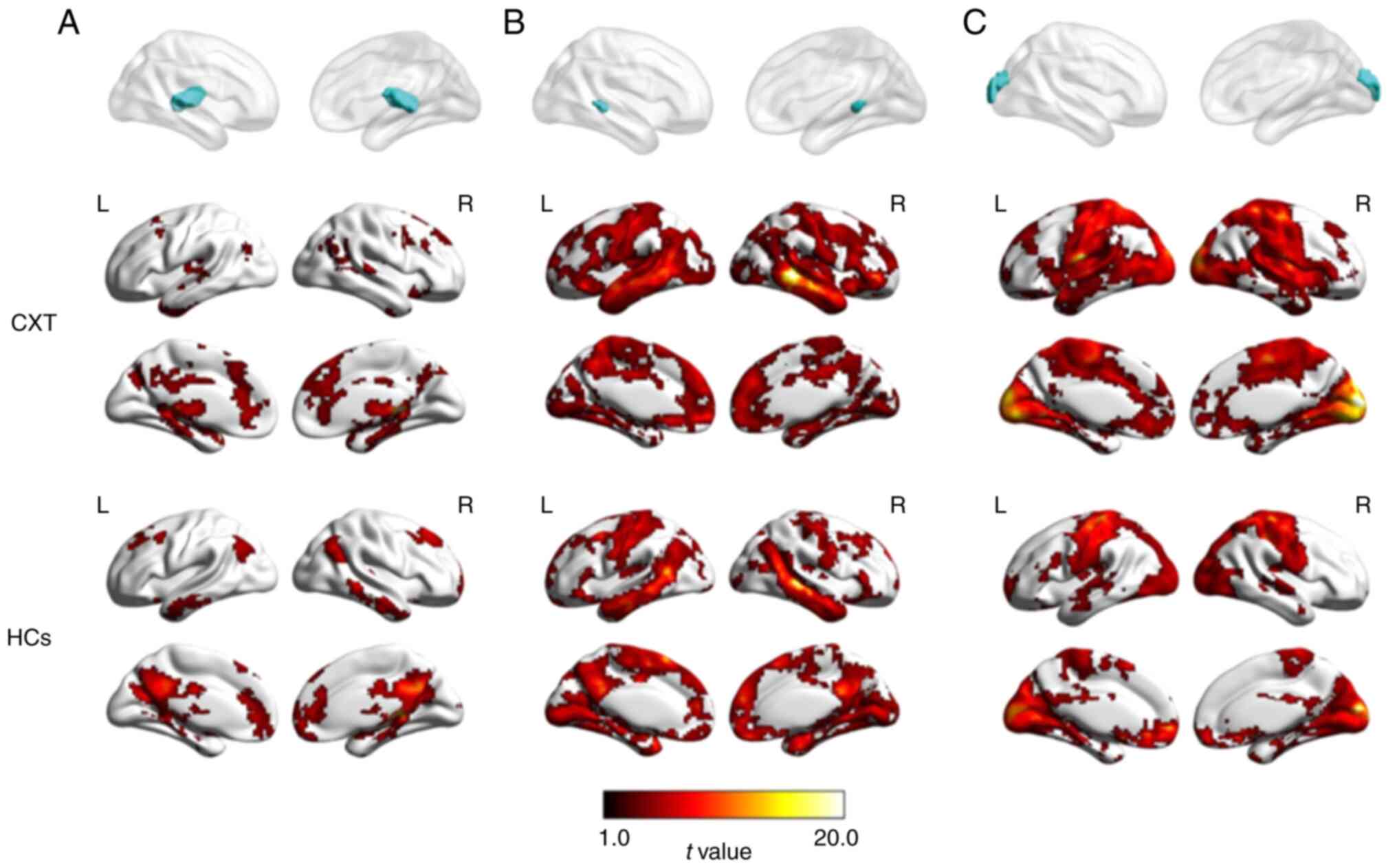|
1
|
Caoli A, Sabatini SP, Gibaldi A, Maiello
G, Kosovicheva A and Bex P: A dichoptic feedback-based oculomotor
training method to manipulate interocular alignment. Sci Rep.
10(15634)2020.PubMed/NCBI View Article : Google Scholar
|
|
2
|
McKean-Cowdin R, Cotter SA, Tarczy-Hornoch
K, Wen G, Kim J, Borchert M and Varma R: Multi-Ethnic Pediatric Eye
Disease Study Group. Prevalence of amblyopia or strabismus in asian
and non-Hispanic white preschool children: Multi-ethnic pediatric
eye disease study. Ophthalmology. 120:2117–2124. 2013.PubMed/NCBI View Article : Google Scholar
|
|
3
|
Pathai S, Cumberland PM and Rahi JS:
Prevalence of and early-life influences on childhood strabismus:
Findings from the Millennium Cohort Study. Arch Pediatr Adolesc
Med. 164:250–257. 2010.PubMed/NCBI View Article : Google Scholar
|
|
4
|
Bruce A and Santorelli G: Prevalence and
risk factors of strabismus in a UK Multi-ethnic Birth Cohort.
Strabismus. 24:153–160. 2016.PubMed/NCBI View Article : Google Scholar
|
|
5
|
Jie Y, Xu Z, He Y, Wang N, Wang J, Lu W,
Wu X and Jiao Y: A 4 year retrospective survey of strabismus
surgery in Tongren Eye Centre Beijing. Ophthalmic Physiol Opt.
30:310–314. 2010.PubMed/NCBI View Article : Google Scholar
|
|
6
|
Li JH, Xie WF, Tian JN, Zhang LJ, Cao MM
and Wang L: Changing strabismus surgery distribution at shanxi
province eye hospital in Central China. J Pediatr Ophthalmol
Strabismus. 54:112–116. 2017.PubMed/NCBI View Article : Google Scholar
|
|
7
|
Oh SY, Clark RA, Velez F, Rosenbaum AL and
Demer JL: Incomitant strabismus associated with instability of
rectus pulleys. Invest Ophthalmol Vis Sci. 43:2169–2178.
2002.PubMed/NCBI
|
|
8
|
Lueder GT, Dunbar JA, Soltau JB, Lee BC
and McDermott M: Vertical strabismus resulting from an anomalous
extraocular muscle. J AAPOS. 2:126–128. 1998.PubMed/NCBI View Article : Google Scholar
|
|
9
|
Ferraina S, Paré M and Wurtz RH: Disparity
sensitivity of frontal eye field neurons. J Neurophysiol.
83:625–629. 2000.PubMed/NCBI View Article : Google Scholar
|
|
10
|
Chan ST, Tang KW, Lam KC, Chan LK, Mendola
JD and Kwong KK: Neuroanatomy of adult strabismus: A voxel-based
morphometric analysis of magnetic resonance structural scans.
Neuroimage. 22:986–994. 2004.PubMed/NCBI View Article : Google Scholar
|
|
11
|
Ashburner J and Friston KJ: Voxel-based
morphometry-the methods. Neuroimage. 11:805–821. 2000.PubMed/NCBI View Article : Google Scholar
|
|
12
|
Brodsky MC, Fray KJ and Glasier CM:
Perinatal cortical and subcortical visual loss: Mechanisms of
injury and associated ophthalmologic signs. Ophthalmology.
109:85–94. 2002.PubMed/NCBI View Article : Google Scholar
|
|
13
|
Gunton KB, Wasserman BN and DeBenedictis
C: Strabismus. Prim Care. 42:393–407. 2015.PubMed/NCBI View Article : Google Scholar
|
|
14
|
Hao R, Suh SY, Le A and Demer JL: Rectus
extraocular muscle size and pulley location in concomitant and
pattern exotropia. Ophthalmology. 123:2004–2012. 2016.PubMed/NCBI View Article : Google Scholar
|
|
15
|
Battaglini PP, Battaglia Parodi M, Tiacci
I, Ravalico G and Muzur A: Visual representation of space in
congenital and acquired strabismus. Behav Brain Res. 101:29–36.
1999.PubMed/NCBI View Article : Google Scholar
|
|
16
|
Wong AMF, Foeller P, Bradley D, Burkhalter
A and Tychsen L: Early versus delayed repair of infantile
strabismus in macaque monkeys: I. Ocular motor effects. J AAPOS.
7:200–209. 2003.PubMed/NCBI View Article : Google Scholar
|
|
17
|
Freud E, Plaut DC and Behrmann M: ‘What’
is happening in the dorsal visual pathway. Trends Cogn Sci.
20:773–784. 2016.PubMed/NCBI View Article : Google Scholar
|
|
18
|
Maunsell JH and Van Essen DC: Topographic
organization of the middle temporal visual area in the macaque
monkey: Representational biases and the relationship to callosal
connections and myeloarchitectonic boundaries. J Comp Neurol.
266:535–555. 1987.PubMed/NCBI View Article : Google Scholar
|
|
19
|
Albright TD and Desimone R: Local
precision of visuotopic organization in the middle temporal area
(MT) of the macaque. Exp Brain Res. 65:582–592. 1987.PubMed/NCBI View Article : Google Scholar
|
|
20
|
DeAngelis GC and Uka T: Coding of
horizontal disparity and velocity by MT neurons in the alert
macaque. J Neurophysiol. 89:1094–1111. 2003.PubMed/NCBI View Article : Google Scholar
|
|
21
|
Nguyenkim JD and DeAngelis GC:
Disparity-based coding of three-dimensional surface orientation by
macaque middle temporal neurons. J Neurosci. 23:7117–7128.
2003.PubMed/NCBI View Article : Google Scholar
|
|
22
|
Tootell RB, Hadjikhani NK, Mendola JD,
Marrett S and Dale AM: From retinotopy to recognition: fMRI in
human visual cortex. Trends Cogn Sci. 2:174–183. 1998.PubMed/NCBI View Article : Google Scholar
|
|
23
|
Chino YM, Cheng H, Smith EL III, Garraghty
PE, Roe AW and Sur M: Early discordant binocular vision disrupts
signal transfer in the lateral geniculate nucleus. Proc Natl Acad
Sci USA. 91:6938–6942. 1994.PubMed/NCBI View Article : Google Scholar
|
|
24
|
Cheng H, Chino YM, Smith EL III, Hamamoto
J and Yoshida K: Transfer characteristics of X LGN neurons in cats
reared with early discordant binocular vision. J Neurophysiol.
74:2558–2572. 1995.PubMed/NCBI View Article : Google Scholar
|
|
25
|
Moustafa AA, McMullan RD, Rostron B,
Hewedi DH and Haladjian HH: The thalamus as a relay station and
gatekeeper: Relevance to brain disorders. Rev Neurosci. 28:203–218.
2017.PubMed/NCBI View Article : Google Scholar
|
|
26
|
Ouyang J, Yang L, Huang X, Zhong YL, Hu
PH, Zhang Y, Pei CG and Shao Y: The atrophy of white and gray
matter volume in patients with comitant strabismus: Evidence from a
voxel-based morphometry study. Mol Med Rep. 16:3276–3282.
2017.PubMed/NCBI View Article : Google Scholar
|
|
27
|
Yan X, Wang Y, Xu L, Liu Y, Song S, Ding
K, Zhou Y, Jiang T and Lin X: Altered functional connectivity of
the primary visual cortex in adult comitant strabismus: A
resting-state functional MRI study. Curr Eye Res. 44:316–323.
2019.PubMed/NCBI View Article : Google Scholar
|
|
28
|
Min YL, Su T, Shu YQ, Liu WF, Chen LL, Shi
WQ, Jiang N, Zhu PW, Yuan Q, Xu XW, et al: Altered spontaneous
brain activity patterns in strabismus with amblyopia patients using
amplitude of low-frequency fluctuation: A resting-state fMRI study.
Neuropsychiatr Dis Treat. 14:2351–2359. 2018.PubMed/NCBI View Article : Google Scholar
|
|
29
|
Su T, Zhu PW, Li B, Shi WQ, Lin Q, Yuan Q,
Jiang N, Pei CG and Shao Y: Gray matter volume alterations in
patients with strabismus and amblyopia: Voxel-based morphometry
study. Sci Rep. 12(458)2022.PubMed/NCBI View Article : Google Scholar
|


















